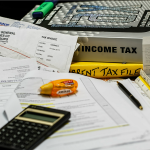 If you pay benefits to your yourself as a director/employee of your own limited company or to employees you may need to complete a P11D at the end of the tax year.
If you pay benefits to your yourself as a director/employee of your own limited company or to employees you may need to complete a P11D at the end of the tax year.
What is a ‘benefit’?
Common benefits given to employees are medical cover, company cars and professional subscriptions.
Examples of typical expenses…
If you have reimbursed expenses for travel, subsistence or entertaining then you may also have to complete a P11D.
What is a P11D?
A P11D is a report sent to HMRC on the benefits and expenses you have provided to your employees (including yourself if you are an employee/director).
The form has various boxes and items must be added to the correct box.
See the attached file: Sample Payroll Data Company – P11D Expenses & Benefits for year 2012-13
Is there any way you can avoid this paperwork?
There are two schemes to simplify the reporting of expenses and benefits. The first is a dispensation and the second is a PAYE settlement agreement.
Dispensation
Some expenses or benefits can be covered by a dispensation. These items would be included in your tax return as business expenses in the employment section of your self-assessment tax return or would be deductible against your tax bill.
Business expenses that are reimbursed are not taxable income for your employees and so HMRC will grant you a dispensation so you do not have to report the reimbursed expenses on a P11D.
In the same way some some benefits would be tax deductible if your employee had paid for them out of personal income, items such as subscriptions to professional bodies. As a consequence HMRC will issue a dispensation to cover this kind of benefit.
How do I apply for a P11D?
You can apply online using this application link.
PAYE Settlement Agreement (PSA)
A PSA is a scheme that allows you to make a one-off payment to HMRC to cover various benefits you have provided to your employees. The PSA will cover three main types of benefit:
- minor items;
- irregular items; and
- items on which it is impractical to add to a P11D.
When you complete the form you will need to calculate the tax and national insurance that is due to HMRC.
For example, a bouquet of flowers to an employee who has just become a parent would be a benefit-in-kind and should be reported on the P11D but with a PSA you would pay the tax and national insurance on behalf of the employee.
How do I apply for a PSA?
You will need to write to your HMRC office and explain what you want and describe the benefits you want it to cover.
What mistakes do employers make when completing P11D’s?
Here are some of the key mistakes employers make:
- Submitting duplicated information, online and by paper;
- Using a paper form for the wrong year;
- Not ticking the “director” box if you are a director of your own single person Limited company; and
- Sending P11D forms to HMRC after ticking the box in part 5 of form P35 (year end PAYE reporting).
Does this sound complicated? If it does, then call for a free consultation with Clearways Accountants on 01737 244298.
